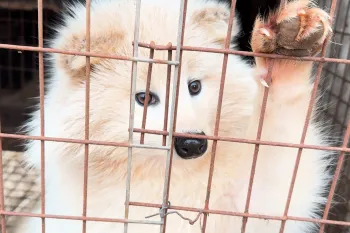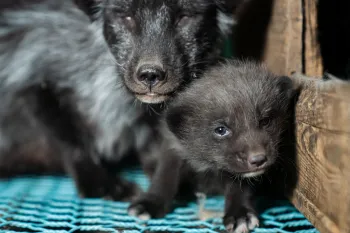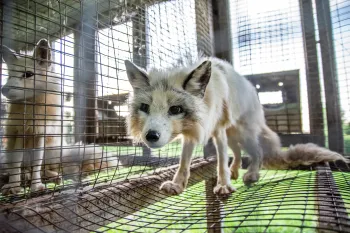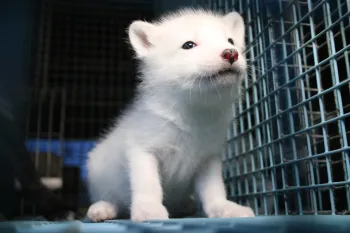This week, we released footage from the most recent undercover investigation of five fur farms, this time in northern China, the source of most of the world’s fur. What we see is what we’ve come to expect with fur farm investigations: foxes, raccoon dogs and mink pacing their cages frantically, a repetitive behavior associated with mental decline, and filthy, feces-encrusted cages packed so close together that the risk of zoonotic disease spread was nearly palpable.
Investigators visited five fur farms in December 2023 in the regions of Hebei and Liaoning. Each farm kept between 2,000 and 4,000 fur-bearing animals in small cages so cramped and crammed together that in some cases the mink or raccoon dogs could touch one another through the wire walls, meaning that diseases can spread very easily. The animals were kept in close proximity to poultry, yet, despite the many hundreds of COVID-19 and avian influenza cases confirmed on fur farms globally since 2020, the fur farmers told the investigators that they don’t routinely sterilize the premises because of the expense.
Once we add animal suffering and public health risks to the immense environmental impacts of fur farming, the whole industry seems nothing less than the height of absurdity. Mink, fox and raccoon dog fur farming and production greatly exceed the environmental impacts of producing other materials used in fashion, according to a study by carbon footprint experts at Foodsteps, commissioned by Humane Society International and reviewed by sustainability expert Dr Isaac Emery.
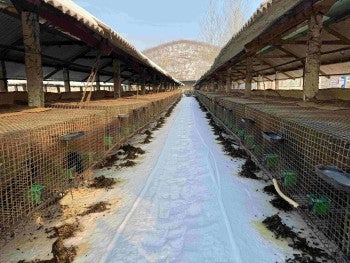
A substantial component of fur’s carbon footprint is the vast quantity of animal products fed to animals on fur farms. On several farms, investigators saw large quantities of frozen fish, chicken meat, eggs and milk powder that are ground up into paste to feed to animals. In addition to contributing to fur farming’s carbon footprint, feeding raw chicken meat to animals on fur farms has been identified by EU experts as a biosecurity risk. As Alastair MacMillan, a veterinary microbiologist who viewed the investigative footage observed, “Cases of avian influenza have already been documented on European fur farms and such close proximity between species significantly heightens the risk of avian-to-mammal transmission. The high stocking density of raccoon dogs could also facilitate virus adaptation to mammalian hosts and the selection of virus strains capable of transmitting between mammals.”
As MacMillan also noted, "The sale of raccoon dog carcasses and cooked meat for human consumption also raises concerns about the potential for zoonotic disease transmission.” At one local restaurant, operators confirmed that they cook 42 raccoon dogs a day to sell to local customers.
There is some good news. In 2023 China produced 10 million fox, mink and raccoon dog fur pelts. Even though 10 million animals killed for fashion is a staggering number, this was a sharp decrease from the 22 million pelts produced in 2022, and an 88% drop from a decade ago, consistent with an overall decrease in global fur production. A large number of small- and medium-sized fur farms previously active in the area have closed due to poor sales.
Last week, I responded to claims that fur is making a worldwide comeback with a letter in the Washington Post. In it I wrote, "An industry founded on death is itself dying out.”
It really should, and for that to occur, we need action across the globe, as HSI’s China policy expert Peter Li said after seeing the footage. “Although this investigation took place in China, the animal suffering inherent in the fur trade can also be seen on fur farms across Europe and North America. China exports fur to countries such as the United Kingdom, the United States and across Europe, making those nations complicit in this cruelty. The end of this cruel, environmentally damaging and dangerous industry cannot come soon enough.”
In the face of the incredible suffering, danger to public health and the waste of animal life seen on these fur farms, we are calling, once again, for a global end to the fur trade. Please join us and sign our U.S. pledge or our global pledge to stop deadly fur.
Follow Kitty Block @HSUSKittyBlock.
